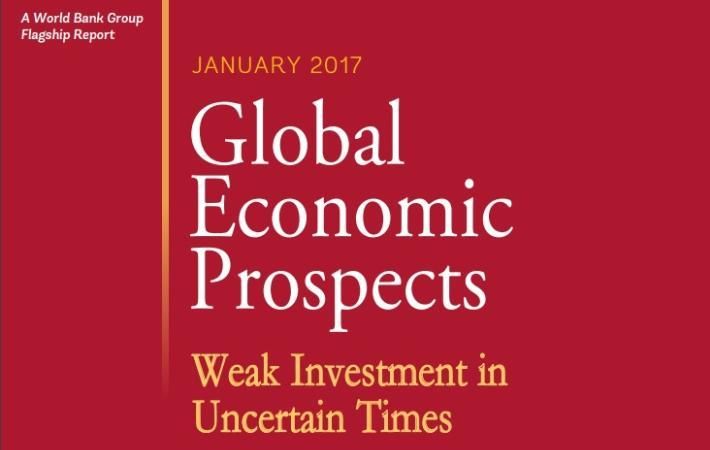India is expected to regain its momentum, with growth rising to 7.6 per cent in fiscal 2017-18 and strengthening to 7.8 per cent in 2019-20, the World Bank has said. A benefit of ‘demonetisation’ in the medium-term may be liquidity expansion in the banking system, helping to lower lending rates and lift economic activity, says the latest report.
India is expected to regain its momentum, with growth rising to 7.6 per cent in fiscal 2017-18 and strengthening to 7.8 per cent in 2019-20, the World Bank has said. A benefit of 'demonetisation' in the medium-term may be liquidity expansion in the banking system, helping to lower lending rates and lift economic activity, says the latest report.#
“The ‘Make in India’ campaign may support India’s manufacturing sector, backed by domestic demand and further regulatory reforms. Moderate inflation and a civil service pay hike should support real incomes and consumption, assisted by bumper harvests after favourable monsoon rains,” says the January 2017 report Global Economic Prospects: Weak Investment in Uncertain Times.
India is expected to regain its momentum, with growth rising to 7.6 per cent in fiscal 2017-18 and strengthening to 7.8 per cent in 2019-20, the World Bank has said. A benefit of 'demonetisation' in the medium-term may be liquidity expansion in the banking system, helping to lower lending rates and lift economic activity, says the latest report.#
However, for 2016-17, the World Bank decelerated India’s growth to a ‘still robust’ 7 per cent from its previous estimate of 7.6 per cent due to demonetisation. “The immediate withdrawal of a large volume of currency in circulation and subsequent replacement with new notes announced by the government in November contributed to slowing growth in 2016,” the report says.
India is expected to regain its momentum, with growth rising to 7.6 per cent in fiscal 2017-18 and strengthening to 7.8 per cent in 2019-20, the World Bank has said. A benefit of 'demonetisation' in the medium-term may be liquidity expansion in the banking system, helping to lower lending rates and lift economic activity, says the latest report.#
Despite this, India continues to hold the distinction of being the fastest growing emerging market economies of the world, bypassing China.
India is expected to regain its momentum, with growth rising to 7.6 per cent in fiscal 2017-18 and strengthening to 7.8 per cent in 2019-20, the World Bank has said. A benefit of 'demonetisation' in the medium-term may be liquidity expansion in the banking system, helping to lower lending rates and lift economic activity, says the latest report.#
India’s growth in the first half of 2016-17 was underpinned by robust private and public consumption, which offset slowing fixed investment, subdued industrial activity and lethargic exports. Consumption was supported by lower energy costs, public sector salary and pension increases, and favourable monsoon rains, which boosted urban and rural incomes, it said adding that economic activity also benefited from a pickup in foreign direct investment (FDI) and an increase in public infrastructure spending. (RKS)
India is expected to regain its momentum, with growth rising to 7.6 per cent in fiscal 2017-18 and strengthening to 7.8 per cent in 2019-20, the World Bank has said. A benefit of 'demonetisation' in the medium-term may be liquidity expansion in the banking system, helping to lower lending rates and lift economic activity, says the latest report.#
Fibre2Fashion News Desk – India
